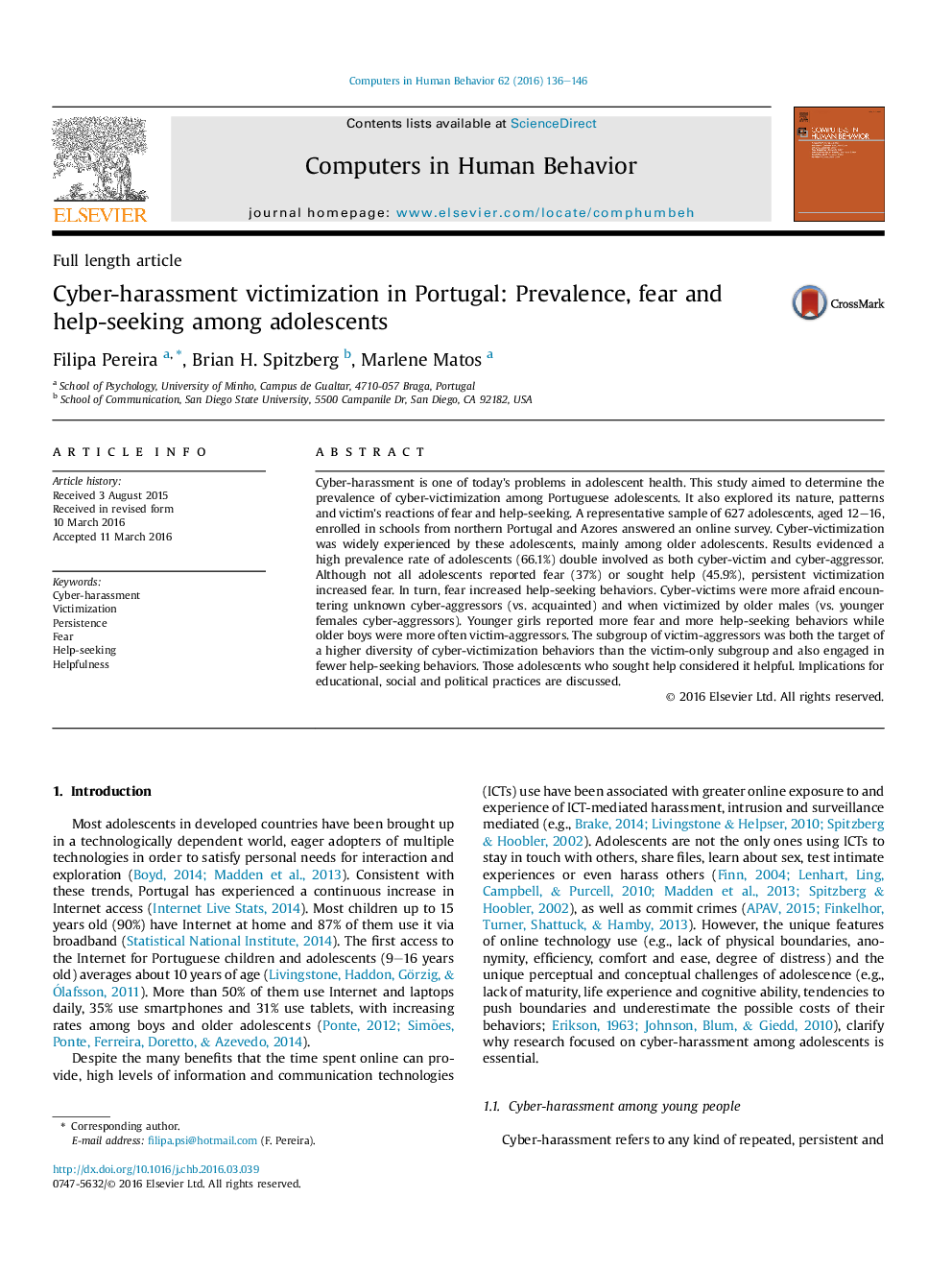| Article ID | Journal | Published Year | Pages | File Type |
|---|---|---|---|---|
| 6836787 | Computers in Human Behavior | 2016 | 11 Pages |
Abstract
Cyber-harassment is one of today's problems in adolescent health. This study aimed to determine the prevalence of cyber-victimization among Portuguese adolescents. It also explored its nature, patterns and victim's reactions of fear and help-seeking. A representative sample of 627 adolescents, aged 12-16, enrolled in schools from northern Portugal and Azores answered an online survey. Cyber-victimization was widely experienced by these adolescents, mainly among older adolescents. Results evidenced a high prevalence rate of adolescents (66.1%) double involved as both cyber-victim and cyber-aggressor. Although not all adolescents reported fear (37%) or sought help (45.9%), persistent victimization increased fear. In turn, fear increased help-seeking behaviors. Cyber-victims were more afraid encountering unknown cyber-aggressors (vs. acquainted) and when victimized by older males (vs. younger females cyber-aggressors). Younger girls reported more fear and more help-seeking behaviors while older boys were more often victim-aggressors. The subgroup of victim-aggressors was both the target of a higher diversity of cyber-victimization behaviors than the victim-only subgroup and also engaged in fewer help-seeking behaviors. Those adolescents who sought help considered it helpful. Implications for educational, social and political practices are discussed.
Related Topics
Physical Sciences and Engineering
Computer Science
Computer Science Applications
Authors
Filipa Pereira, Brian H. Spitzberg, Marlene Matos,
